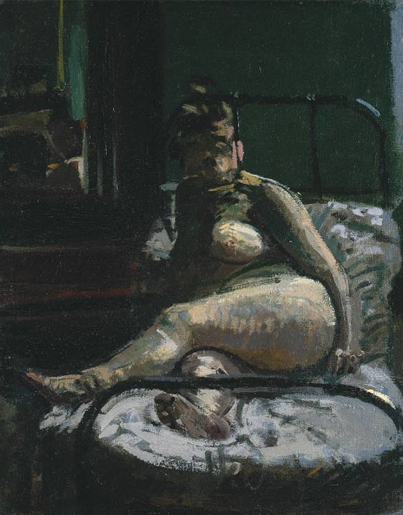An exhibition of paintings by Walter Sickert at the Tate Gallery in Liverpool.
CRITICS have never known quite what to make of Walter Richard Sickert. Apprentice to Whistler, friend and admirer of Degas, founder of the Camden Town School and then, in his later years, the concocter of outrageously peculiar photo-based canvases and weird neo-Victorian illustrator's tableaux, Sickert has never been easily pigeonholed. 'Label him to Calcutta,' wrote Robert Emmons shortly before Sickert's death, 'and he will turn up at Peking . . . Like a boy after a butterfly, just when you have thrown your cap and think you have him pinned, he is away again, coquetting with a flower in your neighbour's garden.'
Sickert, whose slipperiness was entirely deliberate, preferred to see himself as a rather more formidable animal. 'Of painters and critics,' he once wrote, 'my imagination has sometimes vaguely called up a vision. I seemed to see a lumbering tribe of elephants . . . On their heavy heads and narrow backs are seated a voluble tribe of marmosets; I see these dressed in a sort of fancy Zouave costume, with little purple caps braided with gold . . . They conceive themselves to be directing the movements of the elephants, sometimes with threatening, but more often with gestures of grieved reproach.
'At a given moment one of the elephants draws the attention of his companions to their little stowaways. With a heavy gesture each elephant, without stopping in his course, swings his trunk aloft, and picking each little dead- head gently up by the ample seat of his baggy breeches, deposits him, ever so gently, on the ground and, trumpeting loudly, gallops away. It has always been with me, as the Germans say, a long-in-silence cherished wish to be that elephant.'
'WR...

The Elephant Man
28-03-1989

